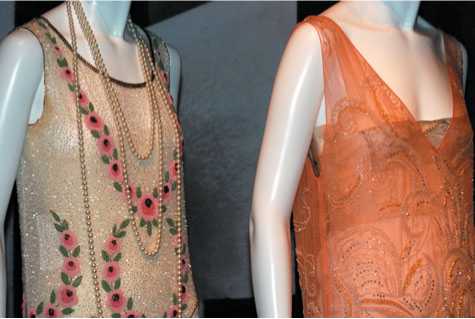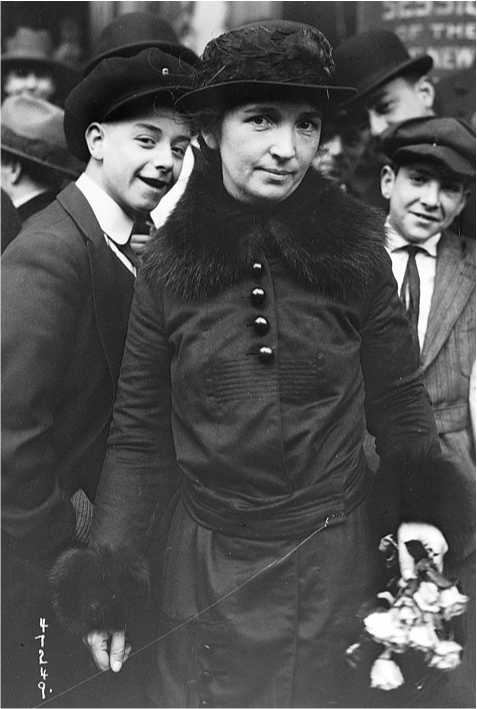The young people of the 1920s were more open about sex and perhaps more sexually precocious than the young had been before the war. This does not mean that most of them engaged in sexual intercourse before marriage or that they tended to marry earlier. Single young people might “believe in” birth control, but relatively few (at least by modern standards) had occasion to practice it. Contraception was a concern of married people, and particularly of married women.
The leading American proponent of birth control in the 1920s, actually the person who coined the term, was Margaret Sanger, one of the less self-centered Greenwich Village bohemians. Before the war she was a political radical, a friend of Eugene Debs, “Big Bill” Haywood, and the anarchist Emma Goldman. Gradually, however, her attention focused on the plight of the poor women she encountered while working as a nurse; many of these women, burdened by large numbers of children, knew nothing about contraception. Sanger began to write articles and pamphlets designed to enlighten them, but when she did so she ran afoul of the Comstock Act of 1873, an anti-obscenity law that banned the distribution of information about contraception from the mail. She was frequently in trouble with the law,

The shape of Flapper sundresses minimized hips and breasts, and the gossamer thinness of the fabric showed that the wearer was not wearing a corset.
But she was persistent to the edge of fanaticism. In 1921 she founded the American Birth Control League and two years later a research center. (Not until the 1960s, however, did the Supreme Court determine that the right to use contraceptives was guaranteed by the Constitution.)
Other gender-based restrictions and limitations of particular importance to women also seemed to be breaking down. The divorce laws had been modified in most states. More women were taking jobs, attracted by the expanding demand for clerks, typists, salespeople, receptionists, telephone operators, and similar service-oriented occupations. Over 10.6 million women were working by the end of the decade, in contrast with 8.4 million in 1920. The Department of Labor’s Women’s Bureau, outgrowth of a wartime agency, was founded in 1920 and was soon conducting investigations of the working conditions women faced in different industries and how various laws affected them.
But most of these gains were illusory. Relaxation of the strict standards of sexual morality did not eliminate the double standard. More women worked, but most of the jobs they held were still menial or of a kind that few men wanted: domestic service, elementary school teaching, clerical work, selling behind a counter. When they competed for jobs with men, women usually received much lower wages. Women’s Bureau studies demonstrated this repeatedly; yet when the head of the bureau, Mary Anderson, tried to get employers to raise women’s wages, most of them first claimed that the men had families to support, and when she reminded them that many female employees also had family responsibilities, they told her that there was a “tacit understanding” that women were to make less than men. “If I paid them the same,” one employer said, “there would be a revolution.” Efforts to get the American

This photograph of Margaret Sanger was taken during her trial in January 1917. Having opened the nation's first birth control clinic in Brooklyn, New York, she was convicted of disseminating information on contraception and served thirty days in prison. Friends had advised Sanger to dress conservatively and affect a persona of motherhood. Despite her demure clothing, her eyes express her characteristic assertiveness.
Federation of Labor to take up the issue failed; few of the unions in the federation admitted women.
More women graduated from college, but the colleges placed more emphasis on subjects like home economics that seemed designed to make them better housewives rather than professional nutritionists or business executives. As one Vassar College administrator (a woman!) said, colleges should provide “education for women along the lines of their chief interests and responsibilities, motherhood and the home.”
The 1920s proved disillusioning to feminists, who now paid a price for their single-minded pursuit of the right to vote in the Progressive Era. After the ratification of the Nineteenth Amendment, Carrie Chapman Catt was exultant: “We are no longer petitioners,” she announced, “but free and equal citizens.” Many activists, assuming the battle won, lost interest in agitating for change. They believed that the suffrage amendment had given them the one weapon needed to achieve whatever women still lacked. In fact, it soon became apparent that women did not vote as a bloc. Many married women voted for the candidates their husbands supported.
When radical feminists discovered that voting did not automatically bring true equality, they founded the National Woman’s Party (NWP) and began campaigning for an equal rights amendment. Their dynamic leader, Alice Paul, disdained specific goals such as disarmament, ending child labor, and liberalized birth control. Total equality for women was the one objective. The party considered protective legislation governing the hours and working conditions of women discriminatory. This caused the so-called social feminists, who believed that children and working women needed the protection provided by such laws, to break away.
The NWP never attracted a wide following, but only partly because of the split with the social feminists. Many of the younger radical women, like the bohemians of the Progressive Era, were primarily concerned with their personal freedom to behave as they wished; politics did not interest them. But a more important reason was that nearly all the radicals failed to see that questions of gender—the attitudes that men and women were taught to take toward each other, not immutable physical or psychological differences—stood in the way of sexual equality. Many more women joined the more moderate League of Women Voters, which attempted to mobilize support for a broad spectrum of reforms, some of which had no specific connection to the interests of women as such. The entire women’s movement lost momentum. The battle for the equal rights amendment persisted through the 1930s, but it was lost. By the end of that decade the movement was moribund.
•••-[Read the Document Margaret Sanger, Happiness in Marriage at Www. myhistorylab. com




 World History
World History









